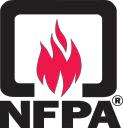FINAL REPORT BY:
Noah L. Ryder, P. E.
Stephen J. Jordan
Fire & Risk Alliance, LLC.
Rockville, Maryland, USA.
Peter B. Sunderland, Ph.D.
University of Maryland
Department of Fire Protection Engineering
College Park, Maryland, USA.
May 2019
FOREWORD
The ongoing push toward sustainability of refrigeration systems will require the adoption of low global warming potential (GWP) refrigerants to meet the shift in environmental regulations. Fire safety is a lingering issue with the new age of flammable refrigerants being adopted and first responders may not be familiar with the change in material hazards or the appropriate response procedures required to safely handle these fire scenarios.
This project is part of the overall two-year project with a goal to enhance firefighter safety and reduce potential injury by providing training on the hazards from appliances with flammable refrigerants. It will document the information about flammable refrigerants technologies and the hazards to emergency responders and develop interactive training modules to transfer the knowledge to the fire service.
This report is focused to develop material documenting the hazards associated with flammable refrigerant technologies and the risks posed to the first responders. The material documentation included a literature review, Task 1, identifying baseline information on flammable refrigerants, their existing usage and implementation into products, potential integration into future technologies, and finally any existing guidance and best practices on response and tactics. A hazard assessment examined the current and potential use cases for refrigerants, the various technologies in which they are employed, the types of environments in which they might be encountered, and the range of hazards associated with them.
The Fire Protection Research Foundation expresses gratitude to the report authors Noah L. Ryder, P.E.and Stephen J. Jordan, who are with Fire & Risk Alliance located in Rockville, Maryland, USA, and Peter B. Sunderland, Ph.D., who is with the University of Maryland, College Park, Maryland, USA. The Research Foundation appreciates the guidance provided by the Project Technical Panelists, the funding provided by the project sponsor.
The content, opinions and conclusions contained in this report are solely those of the authors and do not necessarily represent the views of the Fire Protection ResearchFoundation, NFPA, Technical Panel or Sponsors. The Foundation makes no guaranty or warranty as to the accuracy or completeness of any information published herein.
About the Fire Protection Research Foundation
The Fire Protection Research Foundation plans, manages, and communicates research on a broad range of fire safety issues in collaboration with scientists and laboratories around the world. The Foundation is an affiliate of NFPA.
About the National Fire Protection Association (NFPA)
Founded in 1896, NFPA is a global, nonprofit organization devoted to eliminating death, injury, property and economic loss due to fire, electrical and related hazards. The association delivers information and knowledge through more than 300 consensus codes and standards, research, training, education, outreach and advocacy; and by partnering with others who share an interest in furthering the NFPA mission.
All NFPA codes and standards can be viewed online for free.
NFPA’s membership totals more than 65,000 individuals around the world.
Keywords: refrigerants, air conditioning, flammability, toxicity, hazard, firefighting, training, global warming potential (GWP), A3, A2, A2L, A1
Report number: FPRF-2019-04
FPRF Project Manager: Sreenivasan Ranganathan.


